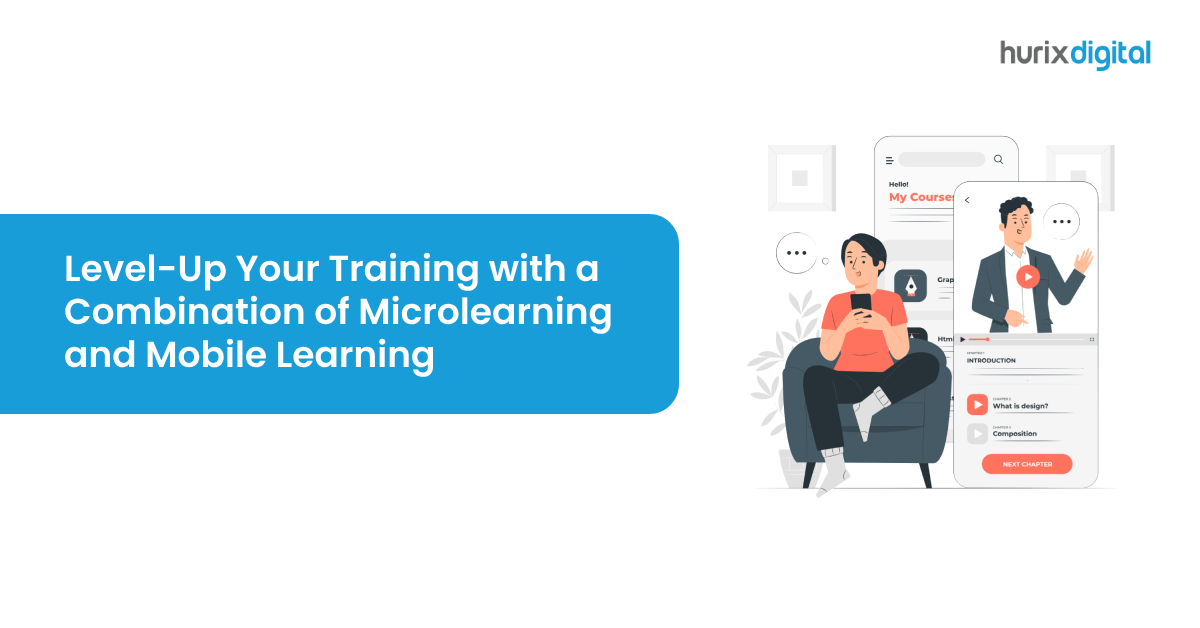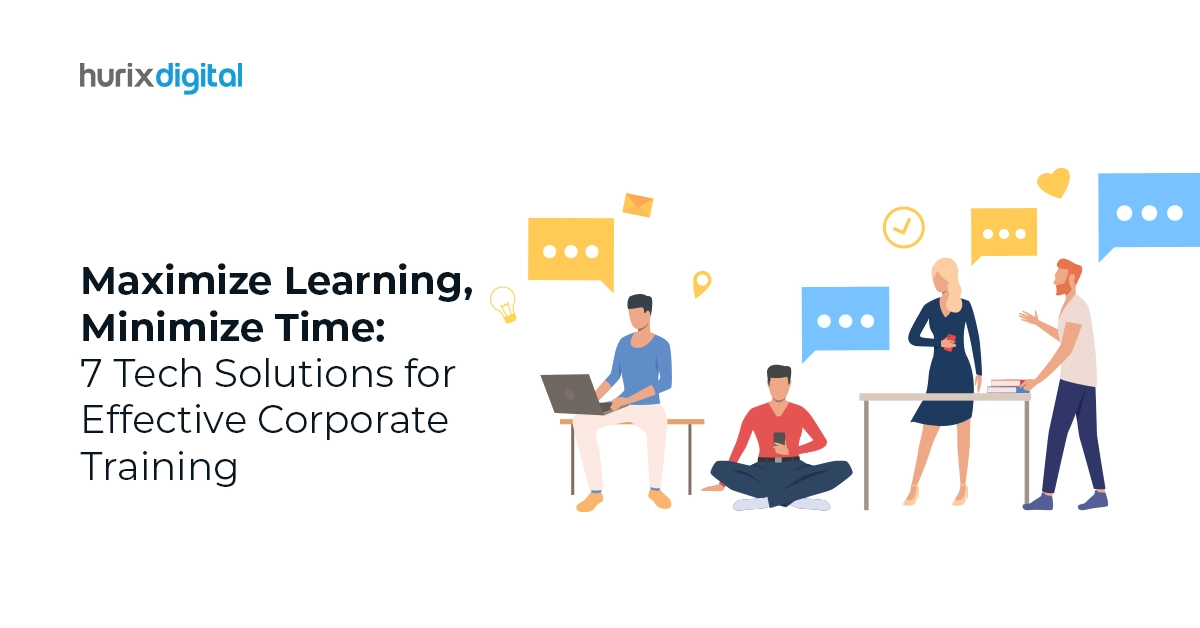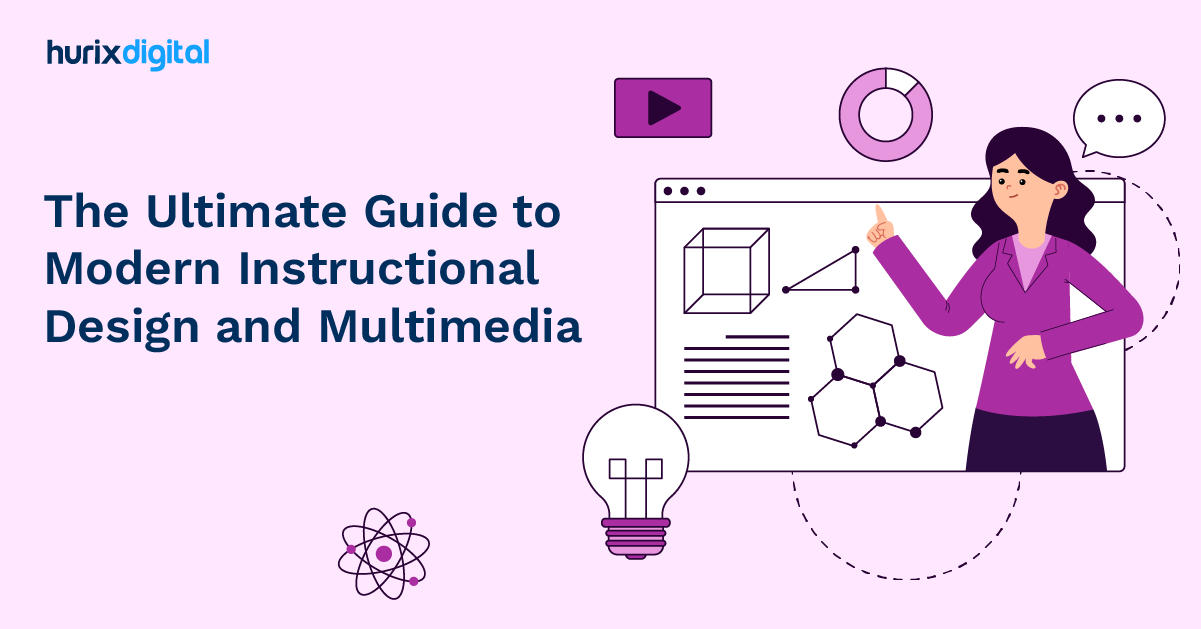
Level-Up Your Training with a Combination of Microlearning and Mobile Learning
Summary
Discover how combining microlearning and mobile learning can enhance training programs. This article provides insights into leveraging both approaches for effective learning.
The Bring Your Own Device (BYOD) policy, which encourages learners to use smartphones and tablets, and the rise in millennial employees have both contributed to the growth of mobile learning.
Over the past few years, there has been an increase in the use of microlearning to provide formal training with assistance and remediation for performance. Additionally, the application of microlearning as a common training technique has grown due to the increasing embrace of mobile learning.
Hence, adopting a combination of micro-learning and mobile learning for workforce training can be highly effective. This blog outlines the various facets of blended learning, its manifold benefits on the training process, and more. Let’s dive in!
Table of Contents:
- What is Microlearning?
- What is Mobile Learning?
- Blended Learning: The Combination of Mobile and Microlearning
- How to Incorporate Blended Learning into Your Training Program?
- Takeaway
What is Microlearning?
Offering bite-sized learning modules with a particular emphasis on learning objectives is known as microlearning. These concise, focused classes are available on a variety of devices and are made to be easily ingested.
Microlearning increases learner engagement and retention by dissecting lengthy material into manageable chunks. Here are the key features of microlearning:
- They are made with a particular learning objective in mind.
- Their typical run length is brief—between two and five minutes and no more than seven minutes.
Also Read: 8 Reasons to Transform Your Learning Content to Mobile Learning Nuggets
What is Mobile Learning?
As the name implies, mobile learning is the process of distributing educational materials via portable electronics like tablets and smartphones. This strategy makes use of mobile technology’s widespread availability to give students easy access to training materials at any time, any place.
The learning process can be made more flexible and personalized with mobile training, meeting the various needs of today’s learners.
The key features of mobile learning are:
- It provides anytime, anywhere access to educational resources.
- It is intended to give students greater authority. They have the freedom to decide when and at what speed they want to read the content.
- With the multi-device support offered by mobile learning, students can access the same course on any device—from tablets and smartphones to desktop computers and laptops. Thus, it gives students the freedom to study on the gadget of their choice.
- The majority of corporate training requirements can be met by using mobile learning techniques. These cover a wide range of training requirements, such as compliance, professional abilities, soft skills, initial integration, and the induction process.
Blended Learning: The Combination of Mobile and Microlearning
Microlearning and mobile learning work together to improve employee training in several ways. From better accessibility and personalization to higher engagement and retention rates, here are the top benefits of blended learning:
1. Promotes Accessibility
Learners can access microlearning modules anytime, anywhere, by using mobile devices, which eliminates time and location constraints. This adaptability boosts engagement and accessibility by enabling learners to interact with training materials whenever it is most convenient for them.
2. Boosts Engagement
Learners are more likely to be engaged when microlearning content is interactive, bite-sized, and delivered via mobile devices. An attention-grabbing learning environment is produced by combining captivating multimedia components with mobile accessibility.
3. Personalization of Learning
Through the use of mobile learning platforms’ ability to track students’ preferences and progress, individualized learning paths and suggestions are made possible.
Organizations may increase the importance and effectiveness of training for every learner by customizing microlearning modules to fit each learner’s unique learning preferences and styles.
4. Promotes Continuous Learning
Because microlearning is repetitive and mobile devices are accessible anytime, anywhere, learners can constantly reinforce what they have learned.
Microlearning modules with comprehension checks, interactive tasks, and quick quizzes help to reinforce learning objectives and encourage long-term memory.
5. Cost-Effective Approach
Organizations can cut expenses related to traditional classroom-based training by utilizing mobile devices for training delivery. This blended approach proves to be an economical choice for extensive training programs due to its combination of the scalable nature of mobile learning and the efficient creation of micro-learning content.
6. Increases Students’ Capacity for Retention
Long-term training sessions tend to tire learners out more quickly. It can take a few minutes for learners to grow bored with training, even if it is interesting.
The best approach to increase learner retention, though, is to combine microlearning with mobile learning. This is because training sessions are brief and concentrate on specific targets for learning.
7. Data-Driven Insights and Analytics
Businesses can benefit from useful data-driven insights and analytics through mobile learning platforms that are integrated with microlearning content. Businesses can monitor trainees’ development, output, and levels of involvement to obtain useful insights into the efficacy of their training.
Additionally, organizations can measure the effect of blended learning on training results, pinpoint areas for enhancements, and optimize instructional approaches by analyzing learner data.
8. Simplification of the Text
Among the benefits of incorporating blended learning into your training plan is the optimization of content for learners. Employees can concentrate on a single subject at a time with an identifiable objective in mind, which helps them acquire knowledge more rapidly and efficiently.
How to Incorporate Blended Learning into Your Training Program?
Choosing a blended learning solution is a great idea for organizations when there is a need to train multiple employees in their unique learning styles. This is due to the flexibility and adaptability offered by microlearning benefits.
Here are some of the unique and best ways you can approach blended learning for training:
1. Enabling Gamification of Learning
This strategy is based on incentives and has been used for some time. It’s being employed extensively in e-learning, where mobile training solutions work effectively.
With a progressive learning management system (LMS), learners can surpass goals and outperform fellow employees and competitors during the training, all while accomplishing and gaining scores, certificates, and awards.
Anything from boards to badges and credentials that open new challenges for learning requisite skills are available. There are a lot of game mechanics to take into account when developing an online blended learning program.
2. Instructional Materials through Mini Clips
These are brief, visually appealing bite-sized clips that set the scene for a training session. Using this framework, you can seamlessly curate interactive videos.
While learning through videos has its advantages, interactive multimedia-driven instruction is superior. You can incorporate interactivity, which is similar to the instructional elements of online courses, to create experiential digital learning.
3. Use Whiteboard Animations
Using visual aids to explain concepts, such as graphics, animations, and music, piques students’ interest and helps them retain the information long after the instructional time ends.
You can use dynamic text animations to convey an idea in a better way. This type of animation integrates lively text animations with background audio to create an outstanding experience.
Also Read: Advantages of Mobile Learning Solutions for L&D Teams
Takeaway
Combining microlearning and mobile learning is a potent and creative approach to training that can completely change how businesses upskill their employees. Through the integration of mobile devices’ accessibility with the bite-sized, interactive content of microlearning, organizations can craft a training experience that is both flexible and intriguing.
The future of corporate training and development will be greatly influenced by the combination of microlearning and mobile learning as long as organizations keep adopting digital blended learning solutions.
Are you looking for advanced corporate training solutions? Get in touch with Hurix Digital. We design training modules that best suit your business goals and objectives.
From bite-sized content for learners who are always on the go to quick customized solutions for multiple devices, our team of experts designs blended learning solutions closely monitoring your L&D strategy.

A highly enthusiastic and motivated sales professional with over twenty five years of experience in solution selling of training-related applications and services. Maintains an assertive and dynamic style that generates results. Ability to establish long-term relationships with clients built on trust, quality of service and strategic vision. Specializes in financial services, higher ed, publishing and government in the areas of learning and development.







